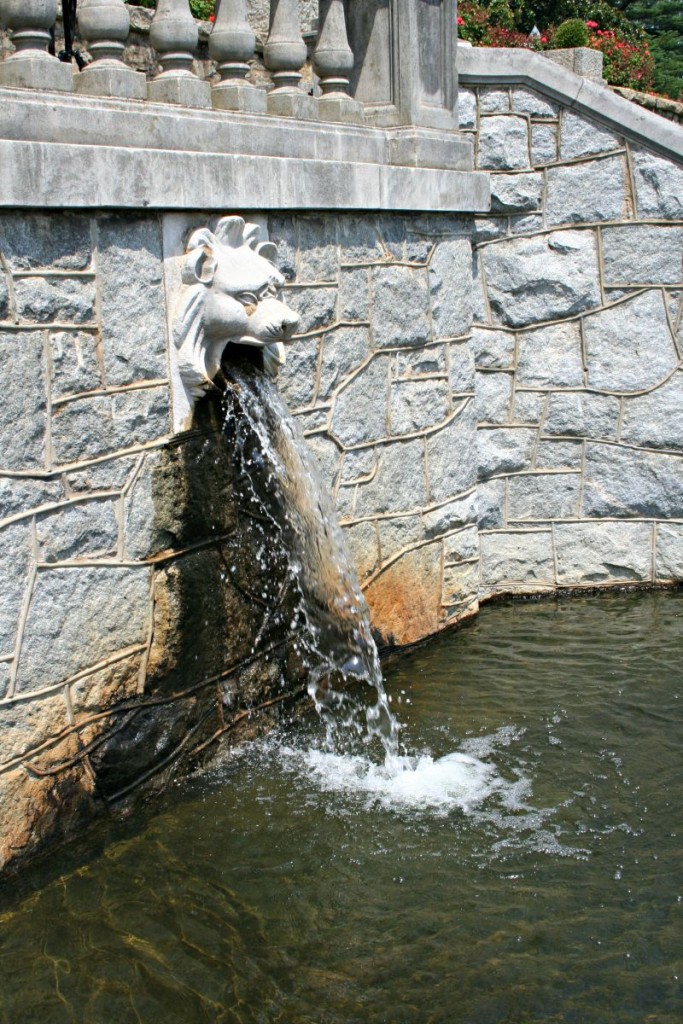Have you every explored a public garden and felt very “at home?” That’s how I felt exploring Maymont, an estate, garden and nature preserve located in the suburbs of Richmond, Virginia. My sister was visiting for a few days, and she loves to garden as much as I do, so we planned a trip to Maymont.
Maymont was built in 1893 by Major John Dooley, an American lawyer and investor who made his fortune after the Civil War by investing in railroads. Dooley and his wife had no children, so upon their deaths in the 1920s, they willed the entire estate and grounds to the city of Richmond. Today, it is preserved in near pristine condition as an example of the American “Gilded Age.”
I didn’t bother taking pictures of Maymont House itself, although we did take the tour. The interior is an odd mix of overly ornate rooms and pleasant Victorian furniture, with the Tiffany nine-panel stained glass window my personal favorite item in the entire house. The gardens are, of course, what I had longed to see for many years, and they were beyond my expectations.
The first garden we came to was a classic herb garden. Brick paths led to the ubiquitous sundial in the center. The herbs were well-marked, with huge stands of rosemary acting as shrubs. I was inspired to add rosemary to my list of border plants for the perennial garden next year; I think it will make a fine hedge for the new entrance I’m planning!
After the herb garden, we wandered down a path through an adorable gate. A walkways edged in unusual flower combinations led to the offices, so we had to double back to the main paths again. A large simple fountain shed cool droplets near the house.
In front of the home was a stunning reflecting pond flanked by twin pillars and a white statue of the Three Graces. Loved it!
Beyond the house, the gardens began in earned as the Via Florum, or Way of Flowers. This Italian garden was supposedly installed as a surprise by Major Dooley for his wife, Sallie. However, Sallie loved to work on the gardens, so I’m not sure how much of a surprise he was able to pull off.
The Italian gardens were breathtaking. A long columned portico opened onto carpet bedding of roses and traditional Victorian annuals. A small fountain on the east echoed a natural waterfall on the right, but water was somehow channeled into the lion’s head fountain and basin a few steps down from the garden itself. Maymont stands on a cliff overlooking the James River, and the architects of the Italian Garden, Noland and Baskerville of Richmond, used the dramatic backdrop to create one of the largest rills, or manmade watercourses, I’ve ever seen. Water flower from the lion’s mouth into a large Italian concrete pool, then rippled over steps, dropping down hundreds of feet to end in a pool that transitioned into the Japanese garden. Oh my. My photography skills couldn’t do it justice.
Next came the grotto garden. Grottoes fascinate me, and always remind me of Lourdes and other sacred places. Twin lions with fierce snarls flanked the grotto garden.
After the grotto, the path opened onto the gentle, manicured Japanese garden. Here a large pool of foot-long koi swam in graceful arcs through the green-tinted water. Japanese maples arched over the pool, and shallow waterfalls and streams rippled into the koi pond. Stepping stones, bridges, and rocks made for a pleasant stroll through the garden.
The highlight of the Japanese garden, however, was the cliff waterfall flowing down that high drop I told you about. The waterfall flanks the Italian garden’s man-made concourse and forms an intriguing juxtaposition with it. The Moon Bridge, a cedar bridge spanning another shallow creek, connects the Japanese garden pathway to the main paths and another path to a poorly maintained cactus garden I could do without.
Maymont was a feast for the eyes. With a $5 admission fee, it was well worth that and the ensuing sunburn and heat rash I ended up with on the sweltering 95 degree day. I could have happily sat on the edge of the koi pond for hours, watching the lumbering fish explore the pond as I listened to the happy chatter of the creeks and waterfalls. The Japanese gardens and the Italian gardens at Maymont are like a little glimpse of what paradise must look like – at least paradise to gardeners.
For more information about Maymont, visit the estate’s website.
All photos were taken by me on the grounds of Maymont.

